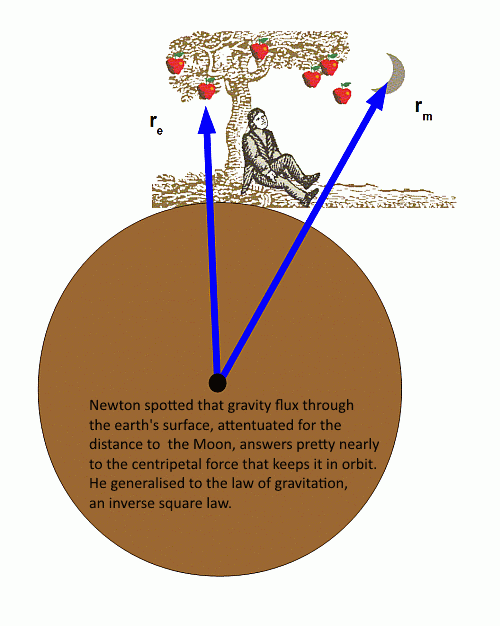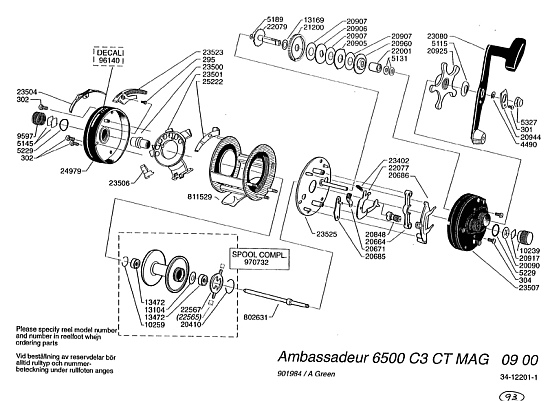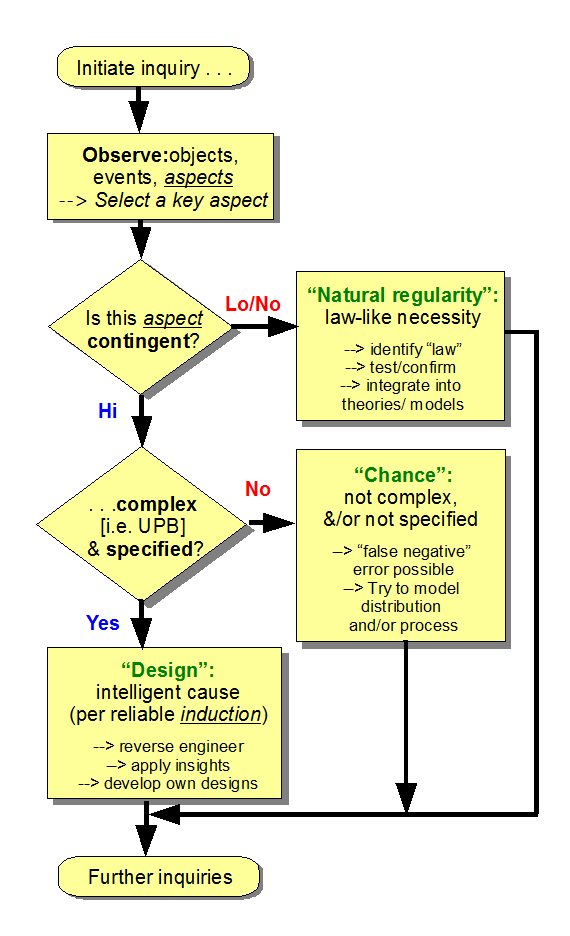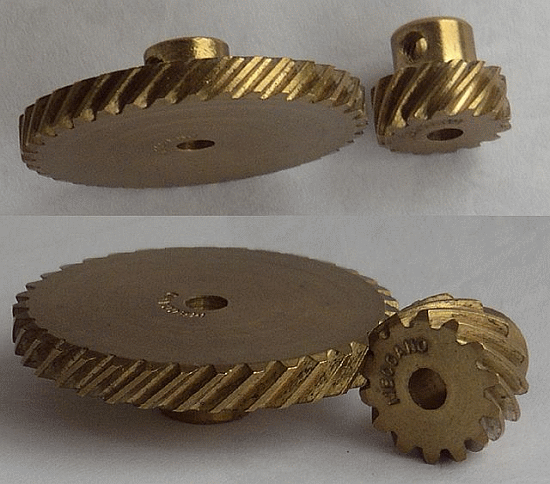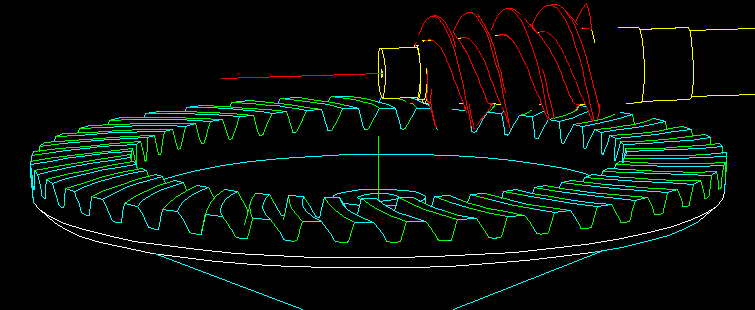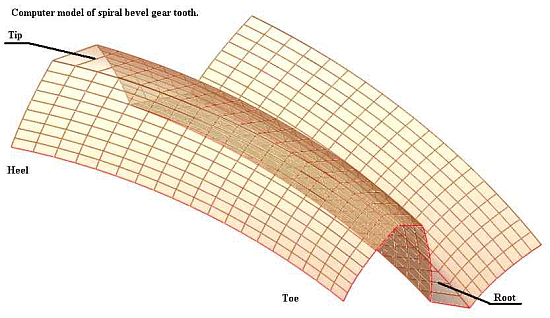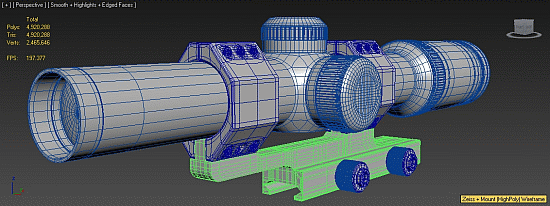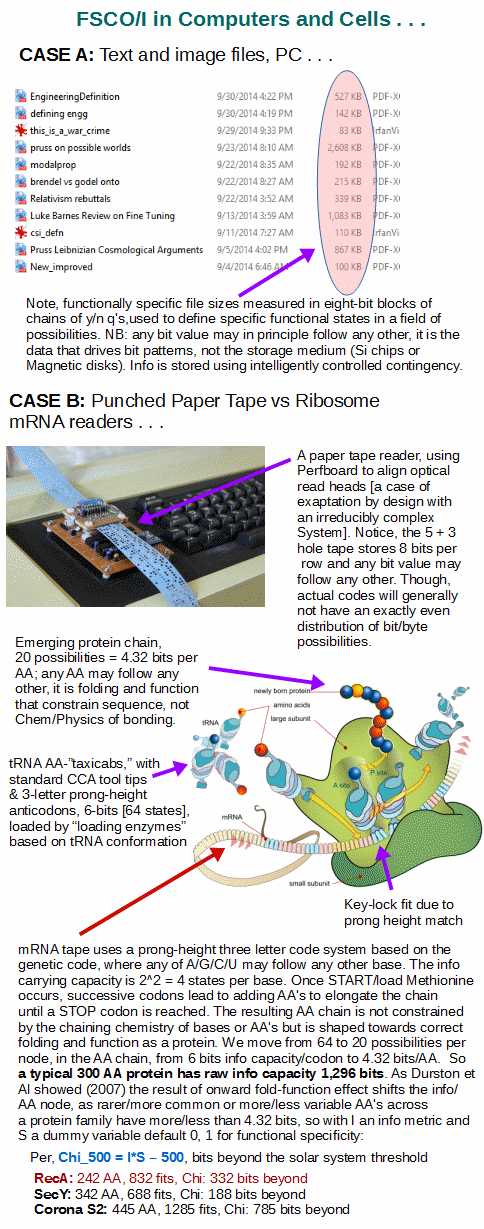From recent “challenges” by KS as a representative of a certain line of design objection thought, we find various unfortunate examples of a type of objection that pivots on a deep misunderstanding and/or misrepresentation of the design inference, empirical evidence based inductive reasoning process.One that even more regrettably, seems strongly resistant to correction on evidence and reason; raising questions of the fallacy of the closed mind.
A representative example (cf. my clip- respond- on- points here) is the following distortion of Newton’s thought on Gravitation as both scientist and design-oriented, theistic philosophical thinker in his own right:
Bob and another friend, an astronomer, observe the positions of the planets over several years. They determine that the planets are moving in ellipses, with the sun at one of the foci. Bob says, “Isn’t that amazing? The angels pushing the planets around are following exactly the paths that the planets would have followed if gravity had been acting on them!”
Newton, of course, famously inferred the law of inverse square gravitation by reflecting on the natural regularities, the falling of an apple on earth and the swinging by of the Moon in orbit, in a key case that is foundational to modern science as we know it:
Newton was able to show that laws of motion such as Kepler’s three laws (including the elliptical orbit of the planets) logically followed from Newtonian Gravitation and his laws of motion, with the aid of some mathematics and basic observations. Later, he would write in his General Scholium to the famous Principia:
. . . This most beautiful system of the sun, planets, and comets [–> notice, his focus on the system of forces and objects, not on the caricature of angels pushing planets around . . . ], could only proceed from the counsel and dominion of an intelligent and powerful Being. And if the fixed stars are the centres of other like systems, these, being formed by the like wise counsel, must be all subject to the dominion of One; especially since the light of the fixed stars is of the same nature with the light of the sun, and from every system light passes into all the other systems: and lest the systems of the fixed stars should, by their gravity, fall on each other mutually, he hath placed those systems at immense distances one from another . . . . We know him only by his most wise and excellent contrivances of things, and final cause [i.e from his designs]: we admire him for his perfections; but we reverence and adore him on account of his dominion: for we adore him as his servants; and a god without dominion, providence, and final causes, is nothing else but Fate and Nature. Blind metaphysical necessity, which is certainly the same always and every where, could produce no variety of things. [i.e necessity does not produce contingency] All that diversity of natural things which we find suited to different times and places could arise from nothing but the ideas and will of a Being necessarily existing. [That is, implicitly rejects chance, Plato’s third alternative and explicitly infers to the Designer of the Cosmos.] But, by way of allegory, God is said to see, to speak, to laugh, to love, to hate, to desire, to give, to receive, to rejoice, to be angry, to fight, to frame, to work, to build; for all our notions of God are taken from. the ways of mankind by a certain similitude, which, though not perfect, has some likeness, however. And thus much concerning God; to discourse of whom from the appearances of things, does certainly belong to Natural Philosophy.
Of course, after he had a headache on trying to figure our multiple body interactions and possibilities for perturbations and destabilisation, he suggested that occasionally God might adjust the system to keep it in order. But after the concept of perturbations was introduced, this was seen as a classic case of God of the gaps reasoning closed off by later progress of science. Though, actually, we do not even have general solutions to the three body problem, and after the impact of the butterfly effect and chaos in the past generation, we still have an active problem of the long term stability of solar systems, and indeed it seems that it is hard, very hard to get a stable one.
But we can easily see the point that Newton actually made a cosmological design inference, much along the lines of Plato before him:
Ath. . . . when one thing changes another, and that another, of such will there be any primary changing element? How can a thing which is moved by another ever be the beginning of change?Impossible. But when the self-moved changes other, and that again other, and thus thousands upon tens of thousands of bodies are set in motion, must not the beginning of all this motion be the change of the self-moving principle? . . . . self-motion being the origin of all motions, and the first which arises among things at rest as well as among things in motion, is the eldest and mightiest principle of change, and that which is changed by another and yet moves other is second.
Cle. Certainly we should.
Ath. And when we see soul in anything, must we not do the same-must we not admit that this is life?
[[ . . . . ]
Cle. You mean to say that the essence which is defined as the self-moved is the same with that which has the name soul?
Ath. Yes; and if this is true, do we still maintain that there is anything wanting in the proof that the soul is the first origin and moving power of all that is, or has become, or will be, and their contraries, when she has been clearly shown to be the source of change and motion in all things?
Cle. Certainly not; the soul as being the source of motion, has been most satisfactorily shown to be the oldest of all things.
[[ . . . . ]
Ath.If, my friend, we say that the whole path and movement of heaven, and of all that is therein, is by nature akin to the movement and revolution and calculation of mind, and proceeds by kindred laws, then, as is plain, we must say that the best soul takes care of the world and guides it along the good path.[[Plato here explicitly sets up an inference to design (by a good soul) from the intelligible order of the cosmos.]
. . . and, Paul:
Ac 17:24 The God who made the world and everything in it, being Lord of heaven and earth, does not live in temples made by man, 25 nor is he served by human hands, as though he needed anything, since he himself gives to all mankind life and breath and everything. 26 And he made from one man every nation of mankind to live on all the face of the earth, having determined allotted periods and the boundaries of their dwelling place, 27 that they should seek God, and perhaps feel their way toward him and find him. Yet he is actually not far from each one of us, 28 for
“‘In him we live and move and have our being’;
as even some of your own poets have said,
“‘For we are indeed his offspring.’
_______
Col 1: 16 For by him [the Eternal Son] all things were created, in heaven and on earth, visible and invisible, whether thrones or dominions or rulers or authorities—all things were created through him and for him. 17 And he is before all things, and in him all things hold together. [ESV]
Where of course in our day, the famed astrophysicist (and lifelong agnostic/atheist) Sir Fred Hoyle went on record:
From 1953 onward, Willy Fowler and I have always been intrigued by the remarkable relation of the 7.65 MeV energy level in the nucleus of 12 C to the 7.12 MeV level in 16 O. If you wanted to produce carbon and oxygen in roughly equal quantities by stellar nucleosynthesis, these are the two levels you would have to fix, and your fixing would have to be just where these levels are actually found to be. Another put-up job? . . . I am inclined to think so. A common sense interpretation of the facts suggests that a super intellect has “monkeyed” with the physics as well as the chemistry and biology, and there are no blind forces worth speaking about in nature. [F. Hoyle, Annual Review of Astronomy and Astrophysics, 20 (1982): 16.]
And again in that same talk:
The big problem in biology, as I see it, is to understand the origin of the information carried by the explicit structures of biomolecules. The issue isn’t so much the rather crude fact that a protein consists of a chain of amino acids linked together in a certain way, but that the explicit ordering of the amino acids endows the chain with remarkable properties, which other orderings wouldn’t give. The case of the enzymes is well known . . . If amino acids were linked at random, there would be a vast number of arrange-ments that would be useless in serving the pur-poses of a living cell. When you consider that a typical enzyme has a chain of perhaps 200 links and that there are 20 possibilities for each link,it’s easy to see that the number of useless arrangements is enormous, more than the number of atoms in all the galaxies visible in the largest telescopes. This is for one enzyme, and there are upwards of 2000 of them, mainly serving very different purposes. So how did the situation get to where we find it to be? This is, as I see it, the biological problem – the information problem . . . .
I was constantly plagued by the thought that the number of ways in which even a single enzyme could be wrongly constructed was greater than the number of all the atoms in the universe. So try as I would, I couldn’t convince myself that even the whole universe would be sufficient to find life by random processes – by what are called the blind forces of nature . . . . By far the simplest way to arrive at the correct sequences of amino acids in the enzymes would be by thought, not by random processes . . . .
Now imagine yourself as a superintellect working through possibilities in polymer chemistry. Would you not be astonished that polymers based on the carbon atom turned out in your calculations to have the remarkable properties of the enzymes and other biomolecules? Would you not be bowled over in surprise to find that a living cell was a feasible construct? Would you not say to yourself, in whatever language supercalculating intellects use: Some supercalculating intellect must have designed the properties of the carbon atom, otherwise the chance of my finding such an atom through the blind forces of nature would be utterly minuscule. Of course you would, and if you were a sensible superintellect you would conclude that the carbon atom is a fix.
Yet again:
I do not believe that any physicist who examined the evidence could fail to draw the inference that the laws of nuclear physics have been deliberately designed with regard to the consequences they produce within stars. [“The Universe: Past and Present Reflections.” Engineering and Science, November, 1981. pp. 8–12]
It should be fairly clear that design thinkers and those in some way sympathetic to design thought have long made design inferences on cosmological facts and patterns (famously, in these days regarding cosmological fine tuning), but they have not made anything like the sort of caricature presented to us above.
But a deeper problem lurks as may be seen by first examining the design inference explanatory filter and how it would look at say a fishing reel as a simple but revealing case in point.
The ABU 6500 C3 mag reel(which is a lot simpler than say Paley’s watch found in a field or his self replicating watch thought exercise that we need to also look at a bit):
The design inference, per aspect empirically grounded causal explanation filter:
Let us think for a moment about the Carbon, Aluminium, Iron and Copper atoms in the materials of the reel. On current general scientific understanding, such are forged in the fusion furnaces of stars and/or through supernovae that form heavy elements. Design thinkers make no fanciful fairytale explanations of such and in fact go on to draw out the significance of a Big Bang cosmology and the theory of cosmic scale hydrogen-rich gas balls forming by gravitational collapse and heating effects, leading to a pattern of star life cycles and patterns shown by analysis of the famed Hertzsprung-Russell diagram:
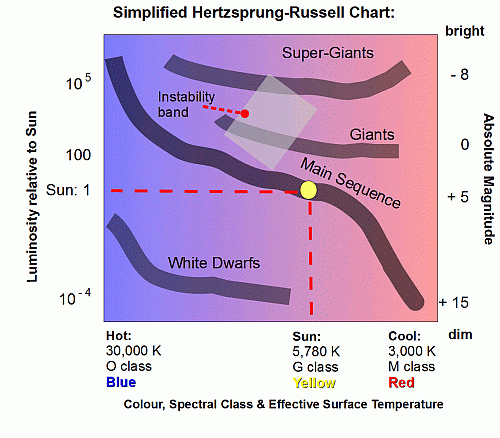 (Already, it should be increasingly evident that the prejudice that those who do not go along with a priori evolutionary materialism are ignorant yahoos, stupid, insane and/or wicked is groundless. The caricature above falls of its own weight.)
(Already, it should be increasingly evident that the prejudice that those who do not go along with a priori evolutionary materialism are ignorant yahoos, stupid, insane and/or wicked is groundless. The caricature above falls of its own weight.)
Of course, how the component parts come to be in such particular configurations and compositions is a separate matter, one full of functionally specific complex organisation and associated information in many ways, tracing to intelligently directed configuration. As, HT Wiki, we may see just by inspecting a set of meshed helical gears, which are carefully, exactingly machined entities:
Meshing gears (HT: S V Lunin — a good read):
With, a gear tooth mesh representation (HT, Lunin):
A relevant, more complex wireframe mesh model for a rifle telescopic sight — and polygon counts for such things can easily run into five to seven figures — is:
Many other parts are already patently FSCO/I rich, but the next focus is the fact of exactingly specific functional interaction based on correct location, orientation [x,y,z location and yaw-pitch-roll] arrangement and coupling of many components in accord with a wiring diagram. That is, we know even long before any numerical estimates are made of the information required to state the functionally specific configuration, that only a very small fraction of the possible clumpings or scatterings of the parts of the reel will function properly as a bait-casting fishing reel. Where also, that functionality is not imagined and projected unto the reel by its owner, it is something that is manifestly objective and observable. Just get a bit of sand where it should not be and the difference will soon be quite obvious.
Of course, as another objection is that the amount of information involved cannot readily be quantified, I simply suggest that one counts the number of structured y/n questions that are required to specify parts and their proper arrangement and coupling to compose a correctly functioning reel. Where each y/n question in that structured pattern specifies one bit of functional information.
This is of course exactly what something like AutoCAD does.
So, what is happening from the perspective of the design inference explanatory filter?
1: we identified materials (and could discuss forces) of nature that require no direct explanation in the context of the ABU 6500 reel, on design. Though, we saw that there is a background issue of cosmological design and inference on signs of fine tuning.
2: We see that the forming of components such as gears is highly contingent but the FSCO/I involved is not reasonably explicable on blind chance and/or mechanical necessity. We do not see meshing helical gears of the size appropriate to an ABU 6500 reel, tossed out by volcanic eruptions or foming spontaneously should a campfire be made on a bit of copper ore.
3: The proper choice, location, orientation and arrangement of the components to create a functional reel is similarly, not reasonably explicable on blind chance and mechanical necessity.
4: Nor is the functionality of such a reel a mere, paint the target after the fact subjective projection unto it. It is independent of the innards or the specifics of organisation and components, and indeed there is a considerable market for reels of similar character or diverse ones.
5: And by using structured chains of y/n questions to specify relevant functional configs, we may and routinely do have numerical values for information content of such a reel or a similar object. Each y/n question stores one bit of info. (For present purposes we need not concern ourselves on more complicated metrics that take into account redundancies and differences in frequency of states of informational elements.)
So, we can see the difference between what is explicable on mechanical necessity, blind chance and/or both, and that which is only reasonably explained on intelligently directed configuration, aka design, given what we know about the source of FSCO/I on trillions of examples in point and linked needle in haystack analysis.
Likewise, we may extend to the biological world by virtue of, for example, the case of the ribosome (which being central to the manufacture of proteins is an OOL issue and onwards the programming of the ribosome brings up body plan origin as there must be a coded algorithm to assemble a given protein and proteins are needed to get cell types, tissues, organs and systems — just think muscles and nervous systems):
Therefore there is no excuse for misrepresenting design thinkers based on a strawmannish caricature of Newton.
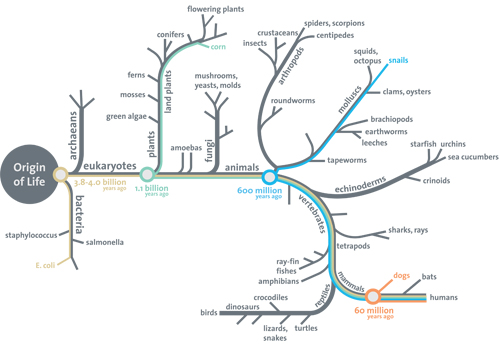 But, what about the fact that natural selection can shape body plans?
But, what about the fact that natural selection can shape body plans?
Actually, that needs to be shown . . . and it needs to be backed up by actual empirical observational evidence, not imposed by begging questions on body plan origin and ignoring the issue of origin of life [which the Smithsonian acknowledges by the diagram at right, is the root of the issue], as the still not adequately answered challenge on the tree of life highlights; after two years, one month and counting.
So, we need sound answers, not ideological impositions of a priori materialism and/or its fellow travellers and linked begging of questions backed up by declarations of fact, fact FACT.
But perhaps the most telling case is that of Paley and the thought exercise on the time keeping self replicating watch, in Ch II of his Nat Theol. Paley is often set up and lampooned as making a silly error of analogy, failing to notice the possibility of reproduction and what it opens the way for. But in fact this is a strawman caricature pivoting on a misrepresentation, a strawman tactic. (At the relevant level, those who present the watch as an emblem of erroneous analogy need to make sure they accurately represent all Paley had to say on the matter. Otherwise they speak with disregard to truth hoping to profit by what is said or suggested being perceived as true.)
For in Chapter II Paley carefully suggests:
Suppose, in the next place, that the person who found the watch [in a field, cf the well known argument in Ch I] should after some time discover that, in addition to [–> a key point] all the properties which he had hitherto observed in it, it possessed the unexpected property of producing in the course of its movement another watch like itself — the thing is conceivable; that it contained within it a mechanism, a system of parts — a mold, for instance, or a complex adjustment of lathes, baffles, and other tools — evidently and separately calculated for this purpose . . . .
The first effect would be to increase his admiration of the contrivance [first excited by observing a complex, functionally specific, time keeping mechanism based on correct interaction of correctly formed and arranged parts], and his conviction of the consummate skill of the contriver. Whether he regarded the object of the contrivance, the distinct apparatus, the intricate, yet in many parts intelligible mechanism by which it was carried on, he would perceive in this new observation nothing but an additional reason for doing what he had already done — for referring the construction of the watch to design and to supreme art . . . . He would reflect, that though the watch before him were, in some sense, the maker of the watch, which, was fabricated in the course of its movements, yet it was in a very different sense from that in which a carpenter, for instance, is the maker of a chair — the author of its contrivance, the cause of the relation of its parts to their use.
Indeed, he goes on to discuss this at quite serious depth, even dealing with the issue of claimed or suggested infinite regress.
Of course, this also shows that the problem of misrepresentation of design thinkers and their thought is a longstanding one.
Drawing together, the design inference process starts from the point that some things fall under natural regularities reasonably explained by laws of mechanical necessity. Aspects of processes shaped by such mechanical forces do not need further explanation as such. Torques and stress-strain relationships in the reel’s gears or elliptical orbits of planets alike fit well within Newtonian dynamics (save for Mercury’s orbit, which is one manifestation of relativity).
The per aspect design filter in the cases in view would point to characterising the laws and embedding them in explanatory frameworks.
Of course that we live in a cosmos with laws and parameters fine tuned for C-Chemistry, Aqueous medium cell based terrestrial planet life, raises another level of design inference. But, that is patently on a very different aspect of the situation and has little to do with the causal factors directly at work in the meshing of gears to transfer torques and rotational kinetic energy, or the orbiting of a planet about a sun.
Nor, are design thinkers explaining the orbiting of planets based on imagined angels actively pushing in accord with some law or other. Theistic design thinkers may consider that God may have created the laws and sustains them in existence, but that is at a different level of discussion. As in, how do laws and worlds come into existence?
The strawman caricature fails.
Next, there may be highly contingent aspects of a situation that under seemingly closely similar initial circumstances may come to have very different outcomes.
That is not compatible with mechanical laws at work on that aspect.
As the filter shows, the default for such is chance, similar to how dice tumble and come to values, or to sky noise etc. So long as we are dealing with stochastically plausible outcomes on chance, that is the default conclusion made, accepting that there may be a false negative.
But under the circumstances of joint complexity-specificity relative to an independently describable deeply isolated cluster of configurations T in a space of possibilities [especially where functionality like that of the reel is involved], design is a superior explanation. Especially where T is an island of function:
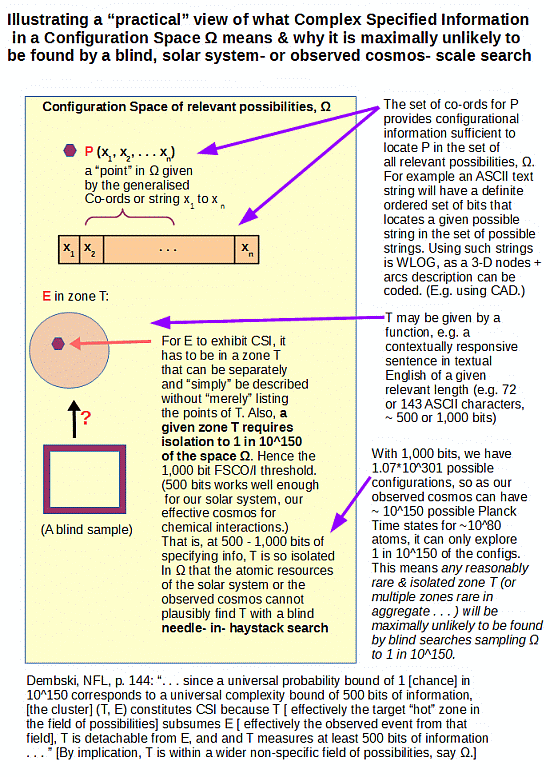 And, that is what the design filter process infers, backed up by trillions of known cases of FSCO/I and the linked needle in haystack vs sparse search capacity problem.
And, that is what the design filter process infers, backed up by trillions of known cases of FSCO/I and the linked needle in haystack vs sparse search capacity problem.
BTW, one of the stranger recent objections that popped up recently is that the island of function metaphor reflects an inability to think multidimensionally.
Actually, if one looks at P(x1, x2, . . xn) in the figure just above, one will see that the point P is specified by n degrees of freedom or co-ordinates or elements of a vector, i.e. dimensions. For a single component, that involves already X-Y-Z location, and orientation relative to the x-axis as polar axis requiring yaw, pitch and roll. Six dimensions for a single component. As a typical reel involves up to about 100 parts, that is 600 dimensions give or take based on number of parts. And that does not take into account the mesh structures needed to specify the parts in a further config space, and the identification of the parts, or the systems to assemble them. And, in the underlying phase space analysis of thermodynamic systems, 10^22 parts — molecules — can require more than 10^22 dimensions at six degrees of freedom per molecule even for a simple case of an ideal gas. The chain of y/n q’s to specify the state of a functional system, of course, if it takes n questions, has n dimensions, with of course two states per dimension, which in the first instance are mutually independent in terms that one bit value may follow any other: 00, 01, 10, 11. The information content involved is obvious.
Where also, in the context of implied sparse search, once one is off an island of function, the challenge is to find the shores of such and island, not to climb hills within such islands. Where, as was shown by using the example of the reel, configuration of multiple matching parts to function implies confinement to narrow zones in the space of possible clumped or scattered possibilities. Islands of function is not an easily brushed aside question-begging analogy, it is a metaphorical illustration of a major constraint on effective design and functionality.
(This multidimensionality objection, too, clearly reflects prejudices and projections on design thinkers that show a subtext of contempt and presumed ignorance even in the face of direct evidence to the contrary. In this case, failure to see what a set of co-ordinates in a configuration space immediately implies.)
So, it is clear that there is a problem of strawman caricatures of design thought and linked inattention to what design thinkers are actually saying, likely fed by a subtext of contempt.
That needs to be corrected.
Finally, as there are several open threads on KS’ challenges currently, this will be a FTR that will be linked to from the threads, e.g. here. END
